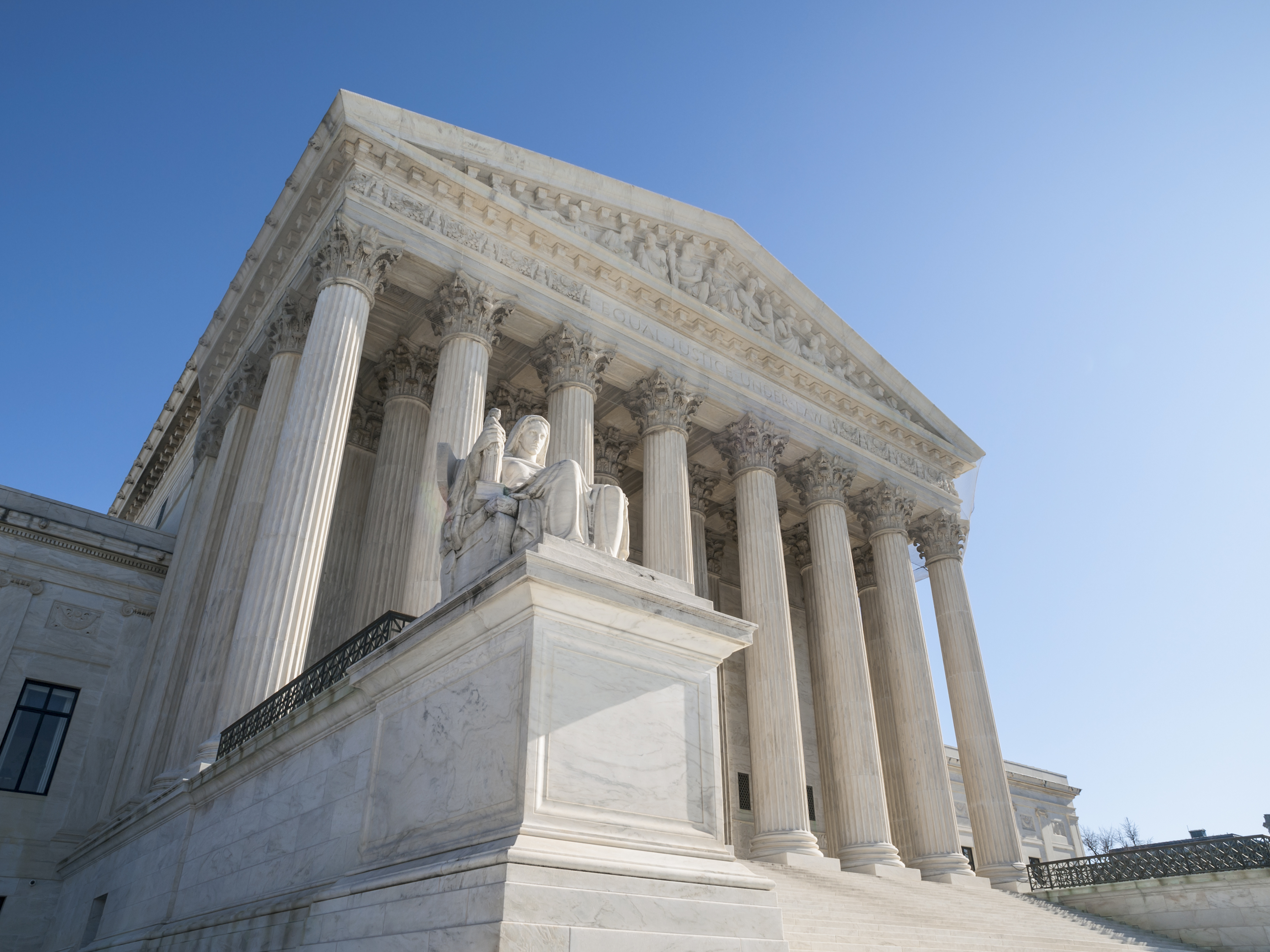
Unimpressed? Perhaps the reader, in the waning second decade of the 21st century, thinks such an innovation might have been implemented, say, many years ago, as it was for the rest of the federal courts.
The reader is reminded that the Supreme Court is a place that still awards quills to lawyers who argue cases there.
The rollout will be slow and gradual and careful. And if you think the court is the least bit sheepish about this, well, there again, you haven't spent much time at the marble palace.
"The courts will often choose to be late to the harvest of American ingenuity," Chief Justice John G. Roberts Jr. wrote when announcing the online project at the end of 2014. "Courts are simply different in important respects when it comes to adopting technology, including information technology."
Roberts said at the time that the online upgrade could come as "soon as 2016," but it does little good to try to hurry things along.
"The court does its own thing at its own pace," said Thomas C. Goldstein, publisher of the independent Scotusblog, which was founded 15 years ago and is the go-to online site for those looking to read petitions and case documents filed with the court. (The American Bar Association publishes digital briefs in the cases the court accepts.)
"Very little outside the building influences the justices' thinking about what makes the most sense," Goldstein said. "So it seems odd to people on the outside, but it really doesn't surprise anyone who deals with the court regularly."
As Roberts explained in that year-end report on the judiciary, the court's primary responsibility is deciding the cases and controversies that come before it. Everything else-including public transparency-is a distant second.
So the court is interested in technology that helps its decision-making, Roberts explained, and warier of other technology - cameras, same-day audio, etc. - even if it might make the court more accessible to the public.
The justices are often called upon to decide cases involving the latest technology but have gotten a bad rap about their own familiarity with it. Justice Elena Kagan offhandedly told an audience in 2013 that the justices are not big fans of email. Drafts of opinions are printed and circulated among the nine.
But the court is not nearly as Luddite as its image. It has had a website, supremecourt.gov, since 2000, and its opinions are available there as soon as they are announced from the bench. Transcripts of oral arguments are available within hours. For reasons never quite explained, audio of oral arguments is posted at the end of the week following Monday through Wednesday arguments, instead of on the same day.
Beginning this week, all documents filed by parties represented by a lawyer must also be filed electronically. (Prisoners and others sometimes represent themselves and file on paper).
But the official filings will still be those on paper, and follow the court's detailed instructions.
The familiar booklet briefs - lawyers provide the court 40 copies each - are typeset in fonts of "the Century family" on paper that is "opaque, unglazed, and not less than 60 pounds in weight." Their cover colors - white, orange, tan, light blue, light red, yellow, cream, light green, dark green - reflect their purpose: a merits brief, for instance, or a request that the court not accept a case.
The Supreme Court is developing its own online system, rather than being part of PACER, which serves the other federal courts. Viewing documents on supremecourt.gov will be free. PACER charges 10 cents a page, and is the subject of a class action suit about whether that fee is too high.
The court hasn't explained why it developed its own system, but Roberts in 2014 repeatedly noted the court's sense of caution.
"Litigation often involves sensitive matters: Criminal prosecutions, bankruptcy petitions, malpractice suits, discrimination cases and patent disputes may all lead to the collection of confidential information that should be shielded from public view to protect the safety of witnesses, the privacy of litigants and the integrity of the adjudicatory process," he wrote.
"Courts understandably proceed cautiously in introducing new information technology systems until they have fairly considered how to keep the information contained therein secure from foreign and domestic hackers, whose motives may range from fishing for secrets to discrediting the government or impairing court operations."
Of course, as Roberts notes, the lower courts have dealt with such concerns for years. More than a billion documents are stored in the PACER system.
More important, Roberts said, was a reluctance to change what the justices feel is working.
"Like other centuries-old institutions, courts may have practices that seem archaic and inefficient - and some are," he wrote. "But others rest on traditions that embody intangible wisdom. Judges and court executives are understandably circumspect in introducing change to a court system that works well until they are satisfied they are introducing change for the good."
In that 2014 report, Roberts noted that at the close of the 19th century, pneumatic tubes were revolutionizing the way American business worked. Air compressors could shoot containers of documents hundreds of feet in buildings. The court waited three decades before installing such a system to relay its opinions to the waiting press and then left it in place for decades.
In 1968, Roberts noted, The Washington Post's Supreme Court correspondent, John P. MacKenzie, described the court's process of transmitting decisions as "perhaps the most primitive ... in the entire communications industry."
Everyone's a critic.


 Contact The Editor
Contact The Editor
 Articles By This Author
Articles By This Author